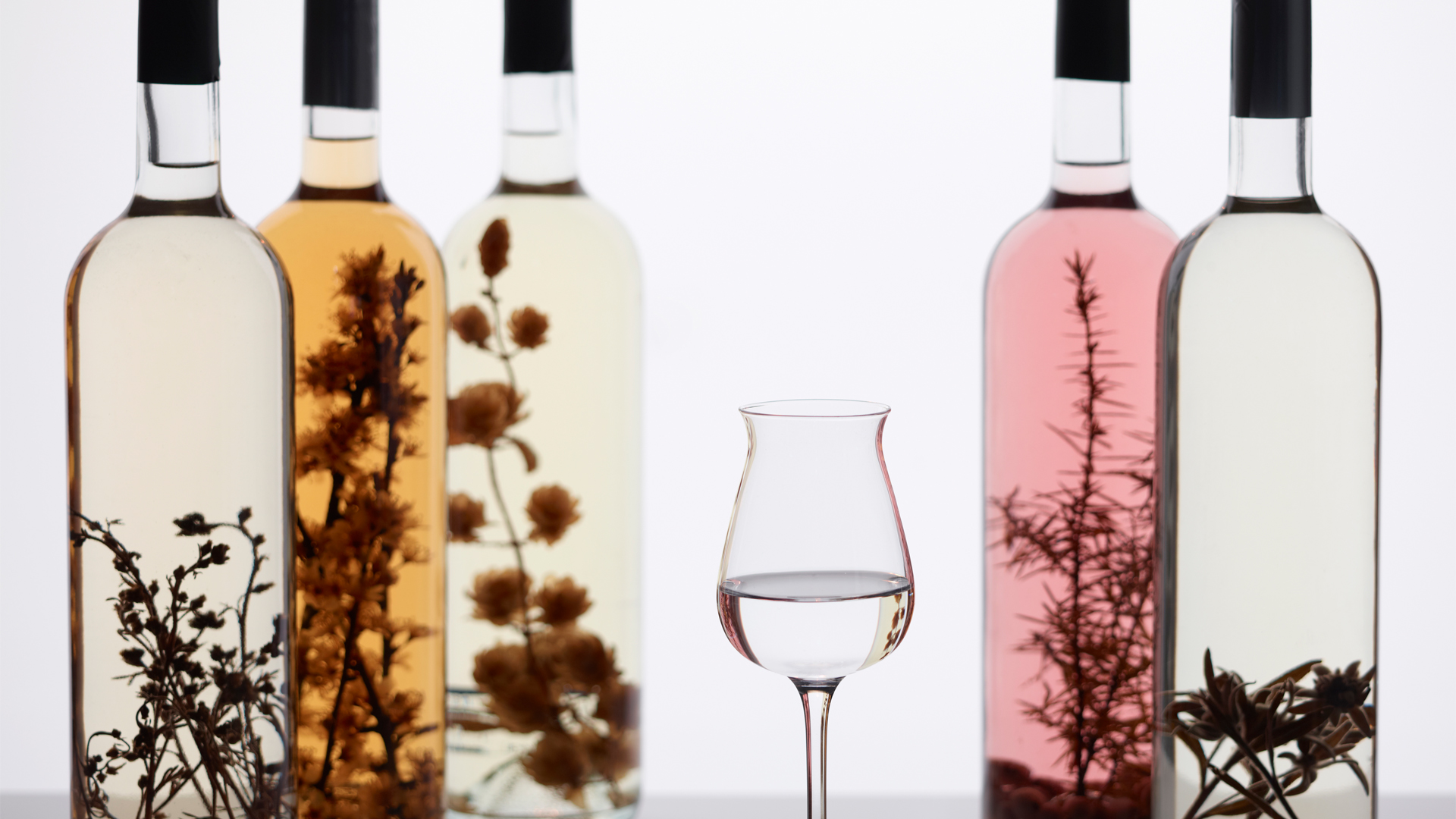Grappa can be found across the world on restaurants’ top shelves in amorphous, hand-blown glass bottles, usually served as a digestif to the cultured diner. However, its roots in northern Italy, and their locals’ respect for it, remain humble.
Distilling as a practice to create alcoholic beverages was introduced to Italy around the 11th century by the Persians. Within a few hundred years (and many failed attempts and variations) the first grappas were being sipped and honed. By the 15th century in northern Italy, grappa and brandy-like versions were so widespread that its production and trade was being taxed by the local governments. Since then, it has grown in popularity as a staple of northern Italy–the regions of Veneto and Trentino-Alto Adige being two of the largest producers, with Piemonte in tow.
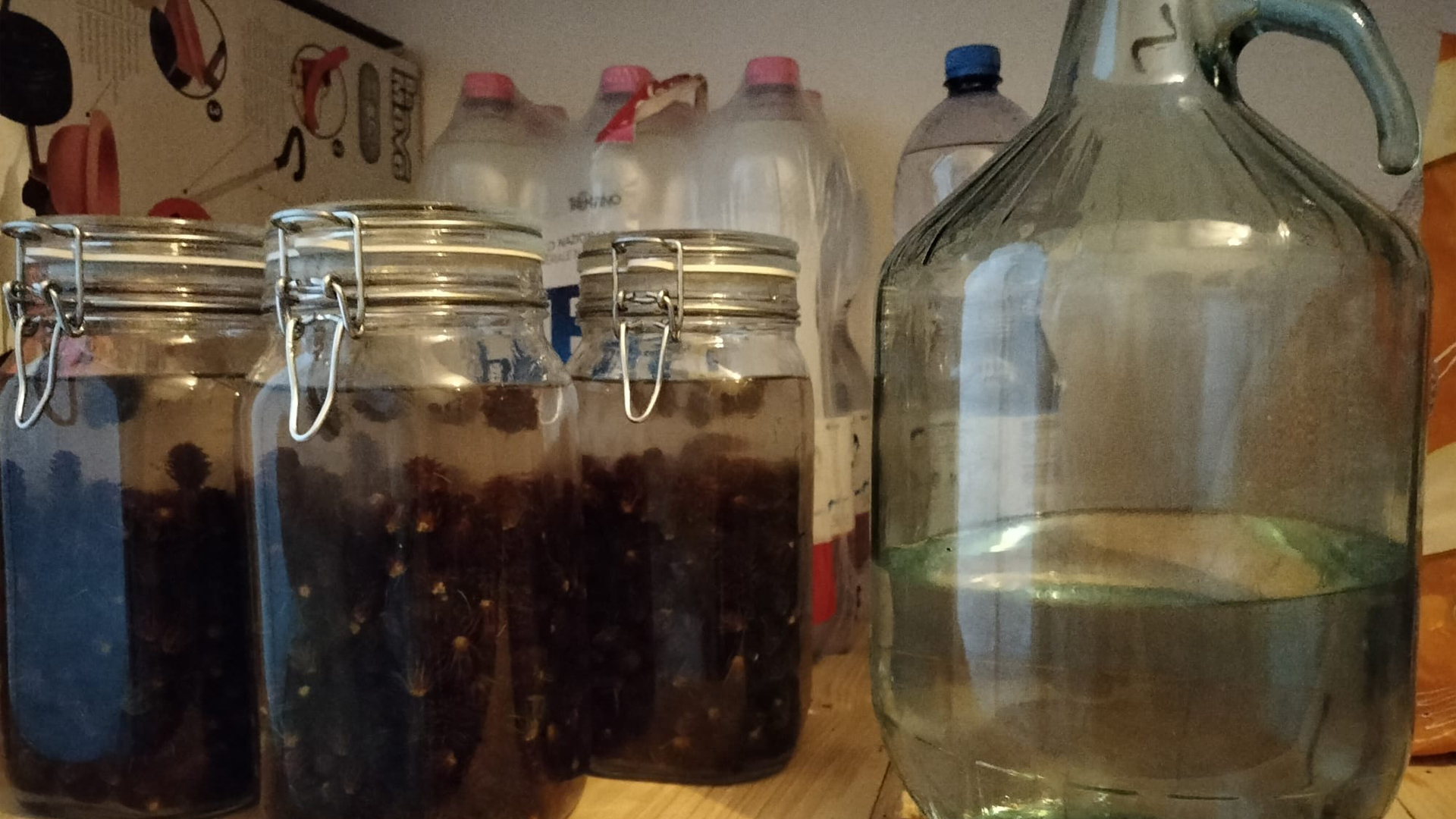
Larch Infusions (Photo Credit: Lorenzo Andreatta)
As with many well known traditional Italian dishes today, like our beloved Carbonara and Puttanesca, Grappa was also originally in this realm of cibo povero--colloquially translated as peasant food. For millennia the Italic peoples have been experts at perfecting their food and drink with what scarce resources they had around them: a bit of this cured meat, a few leaves of this herb, some cream from the village cows, a hand-rolled pasta from the local grain. The culinary ingenuity of these early contadini is present today in kitchens across the world. Grappa also follows this pattern of sustainably coaxing every taste and purpose out of your surrounding environment.
Put simply, after the grapes are pressed to make wine, the leftover pulp, seeds, stems, and skins, known as pomace, is then distilled separately to make grappa. Through the years this process has been built on and various types of distillation have been employed, but the basic original sentiment remains: grappa is the product of winemakers’ desire to get every use they can out of their crop.
Because of this long, respectful love of their fruits, grappa in northern Italy today is a widely cherished and celebrated drink. You can travel the pine-covered valleys and find a different version in each town with decades of particular tradition behind it. With 130 official grappa distilleries today scattered across the northern regions, each one takes pride in their particular process and ingredients. Their water comes from their own alpine springs–their herbal and fruit flavor additions usually from their local village’s crops and dense forests. It’s not surprising that in 1779, Distilleria Nardini, Italy’s oldest grappa producer, named their first variation of it, Aquavite di Vinaccia, which translates to, water-of-life made from pomace. It seems that even at its conception, grappa was praised as something of local importance–a part of life.
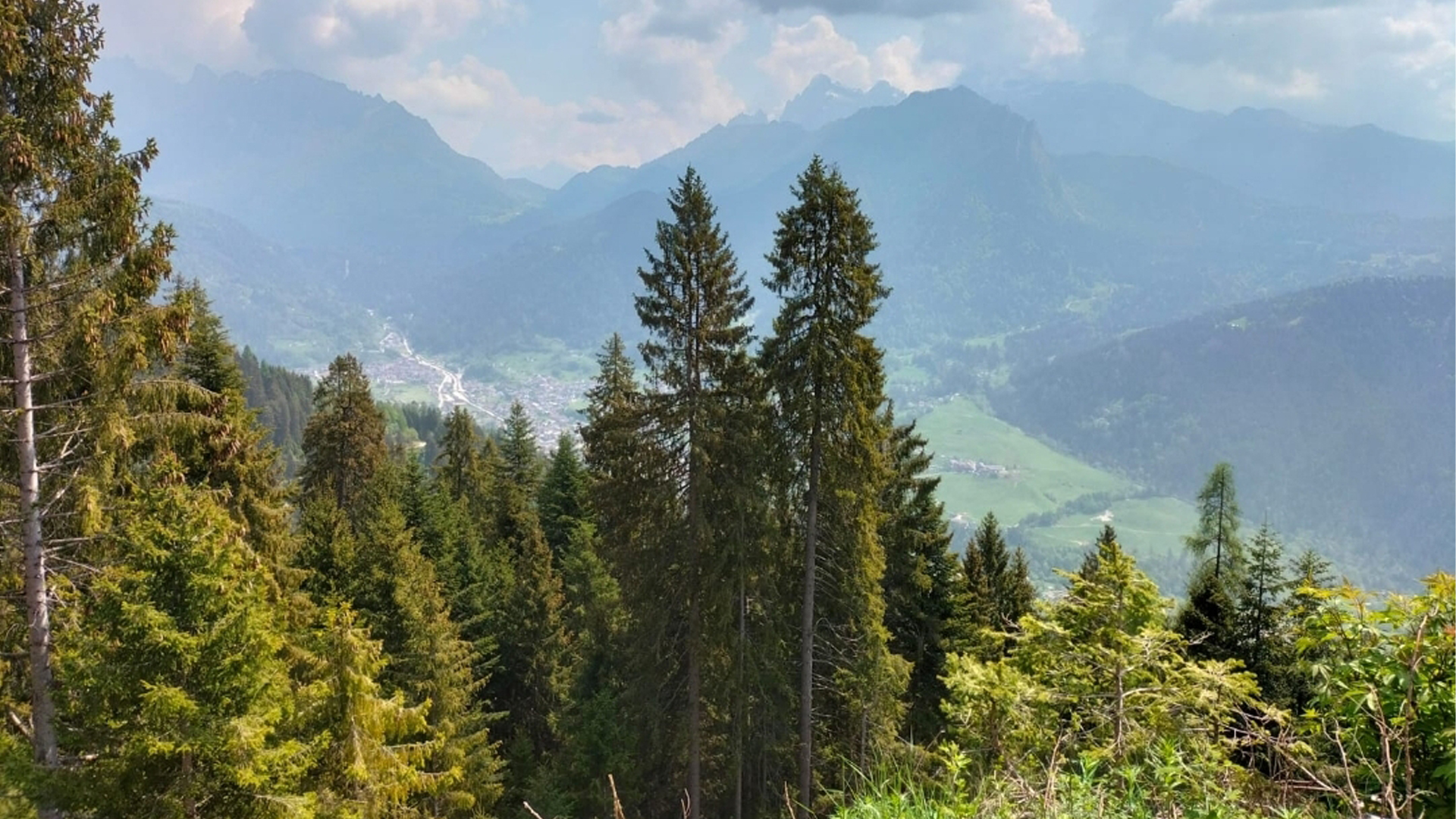
Local pine trees in Northern Italy, perfect for the traditional process of infusing grappa (Photo Credit: Lorenzo Andreatta)
While many Italians of Trentino, Veneto, and the surrounding regions have their favorite distilleries and favorite types of grappa, the traditional process of infusing grappa at home is still popular, often with local pine trees’ cones while they are small, green, and dense. You can walk into many basements and find large glass jars of aging grappa with various cones, needles, and other additions soaking, slowly imparting their flavors into the liquor. These usually just have a crude masking tape label with its contents markered on. In some areas it would be a strange thing to visit someone's home and leave without them having you try their home-infused versions.
Every time I visit my cousins in the valley of Baselga di Pinè, a comune northeast of Trento high in the foothills of the Dolomiti, situated around two lakes, I am unable to leave any home until I sit and sip their latest creations. Warm grins watch and closely survey whether this American-born Italian cousin of theirs can weather the burn of young, robust grappa (it usually gets easier by the second or third cousin I visit that day). I have memories from my childhood of the older generations crafting this same homemade elixir, cupboards in their basements full of different jars of grappa, each with some flora in it they harvested locally in the forests or in the mountains.
The process for this infusion is simple and for this reason, you can find countless variations.
My cousin begins with a fresh grappa without flavoring, Grappa Giovane. He sources this locally before any other flavors are rendered. In the spring of this year, he hiked in the surrounding mountains in search of the conifer Pino Mugo (simply Mugo in the Trentino dialect), also known as Swiss Mountain Pine, native to high elevation slopes in southern Europe. This tree’s cones remain small and if harvested as buds or young cones, their dense flavor and natural sugars create a beautifully-infused Grappa di Mugo. Along with Pino Mugo, he also searched for European Larch trees (Larix in dialect), also native to the alpine regions. In Alto Adige Larch is a widely respected tree due to some in the area being over 3,000 years old. These are granted the name, Monumenti Naturali, or Natural Monuments. The early blooms from these trees (buti di lares in the dialect) are more sought by some, prior to them turning into small cones.
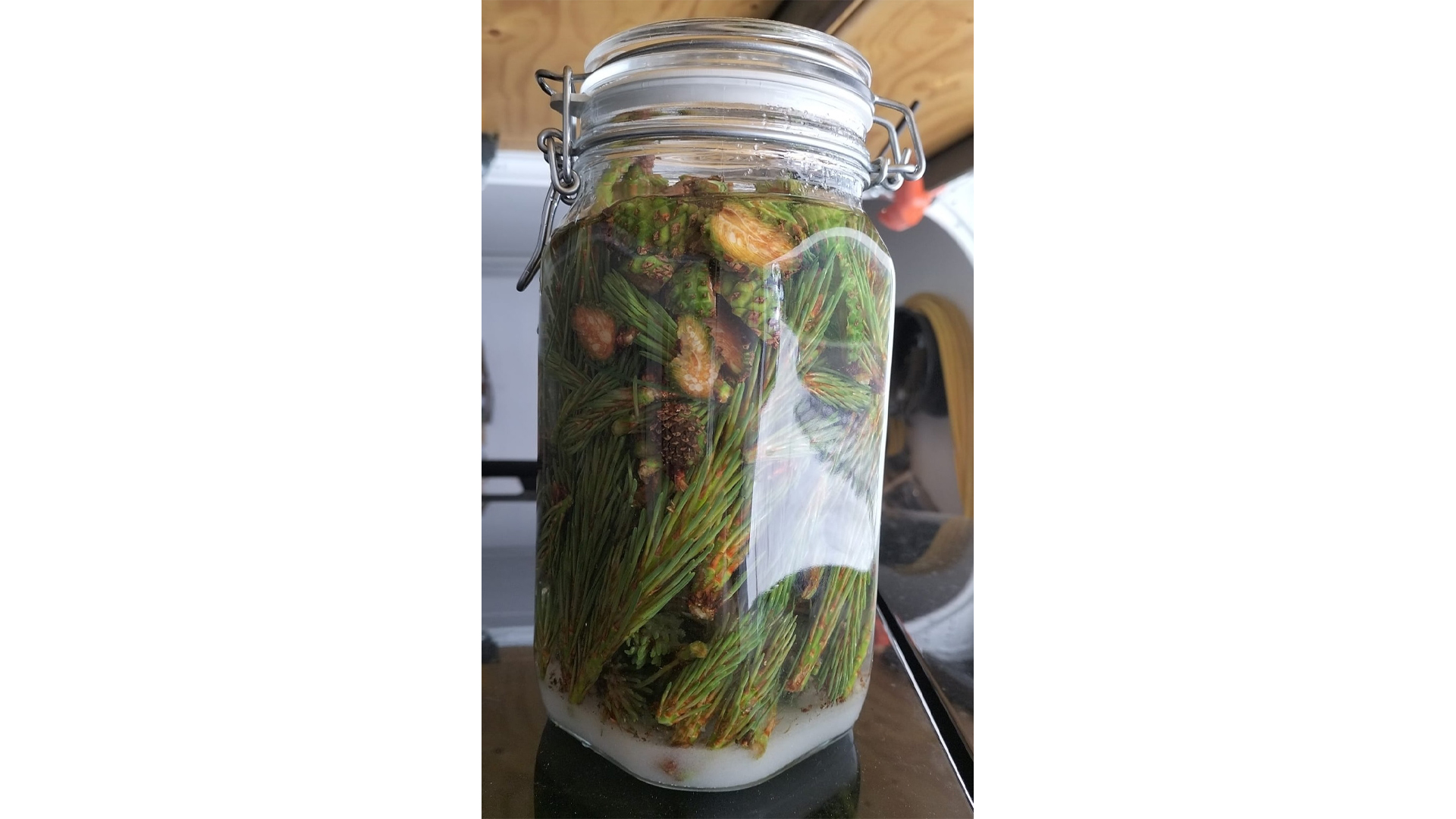
Pino Mugo infusion with cones and needles (Photo Credit: Lorenzo Andreatta)
After harvesting and allowing them to dry for some time in the summer, the small cones and blooms are packed into their Grappa Giovane bottles, sometimes with a bit of sugar or other herbs, and left to infuse for thirty to forty days on average. When ready, they are bottled and sipped after dinner, in your morning coffee, after a big lunch, or when you have a visitor.
While my cousin prefers this method for his own creations, he stressed that it varies for everyone wishing to infuse their grappa. Some use Swiss Stone Pine cones (Zirmo in dialect), and some add sugar later in the process. Some put their infused jars in sunny spots, and some in dark basements. Some use blooms and some use cones. Some will even hike to the same trees in the mountains every four or five days, monitoring the bloom and cone maturation. They decide when it is best for their grappa, with the perfect amount of pine resin in the cones, and hike home with a bushel of them. There are endless methods discussed in these hills, all celebrated, none wrong.
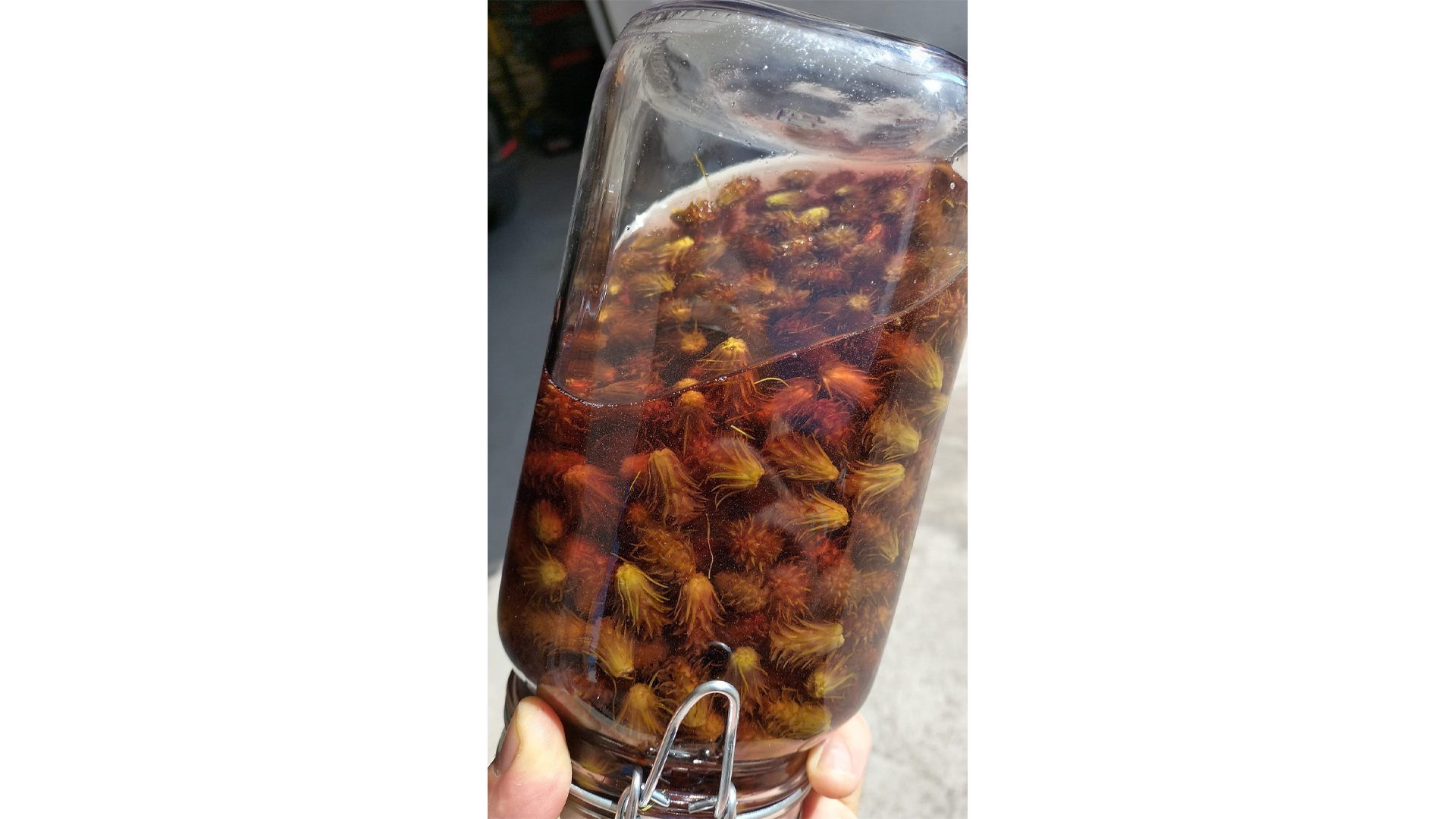
European Larch Bloom Infusion (Photo Credit: Lorenzo Andreatta)
I was only twenty-two when I visited Erino, at the time my eighty-two year old relative. I woke in the morning in his 200+ year old wood-siding house that many generations of my family had grown in, the smell of the wood fired hearth in every room of the creaky, breathing house, the windows cracked to allow some chilled fresh alpine air in. Upon walking into the kitchen, Erino had my coffee ready from the Moka and a bottle of masking-tape-labeled grappa sat on the table. My Italian was still rough at this point, and his northern dialect was so thick that it wouldn’t have mattered anyway, so we had resorted to gestures and hands to communicate. After sitting for a few moments in silence, except for the crackling of the hearth, his only gesture was the slight push of the grappa bottle toward me, and a soft nod to my coffee–a strong gesture, in many ways.
Louis Andracchio
Louie Andracchio lives in Philadelphia, Pennsylvania. After studying linguistics and creative writing at Temple University, he started a custom furniture business which he operates today. With close cousins in northern Italy and grandparents originally from Trentino and Calabria, Louie has been partly shaped by his colorful lineage and also studied to become bilingual to better understand where his family comes from.

